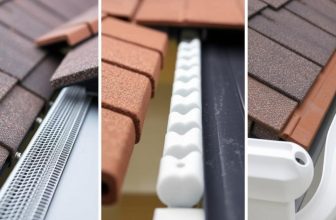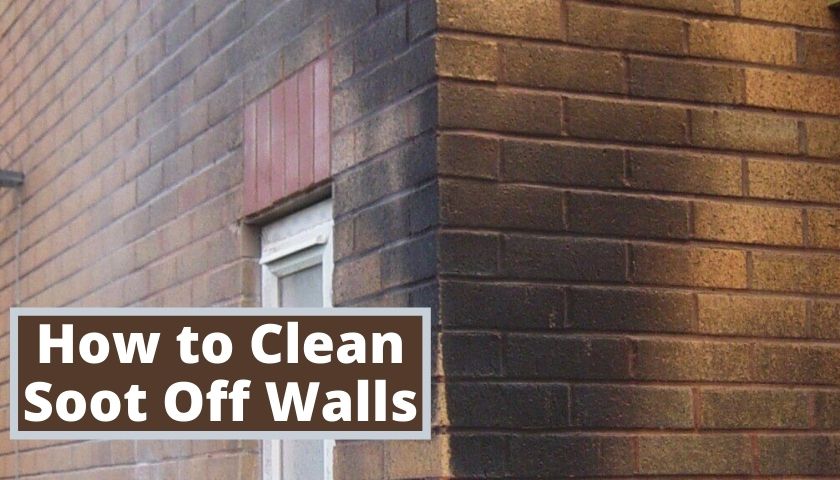How to Make Your House Naturally Smell Good | Fresh, Clean & Chemical-Free
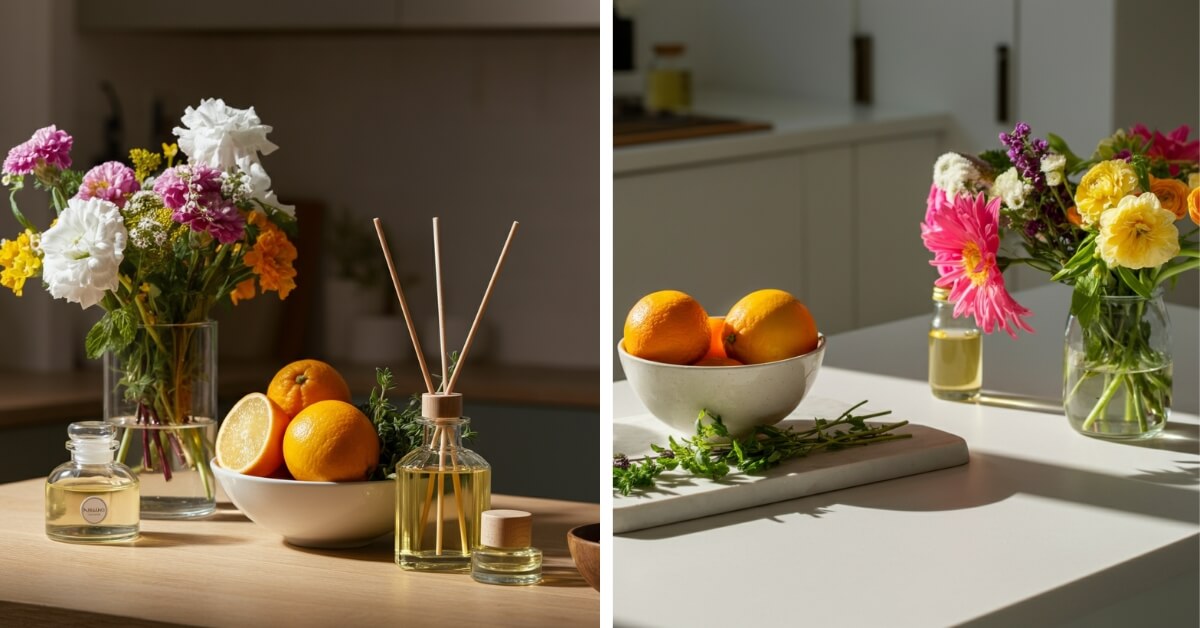
As an Amazon Associate I earn from qualifying purchases.
A fresh-smelling home instantly feels more welcoming, and you don’t need synthetic sprays or chemical plugins to achieve it. If you’re wondering how to make your house naturally smell good, the answer lies in simple, eco-friendly methods. With the right natural techniques, you can fill every room with clean, inviting scents that are safer for your family and the planet. From baking soda to fresh herbs, essential oils to seasonal simmer pots, you can easily create your own signature fragrance while improving indoor air quality.
In this guide, you will learn proven, affordable techniques to keep your home smelling amazing all year round using simple ingredients you already have.
Contents
Why Natural Scents Are Better Than Artificial Fragrances to Make a House Naturally Smell Good
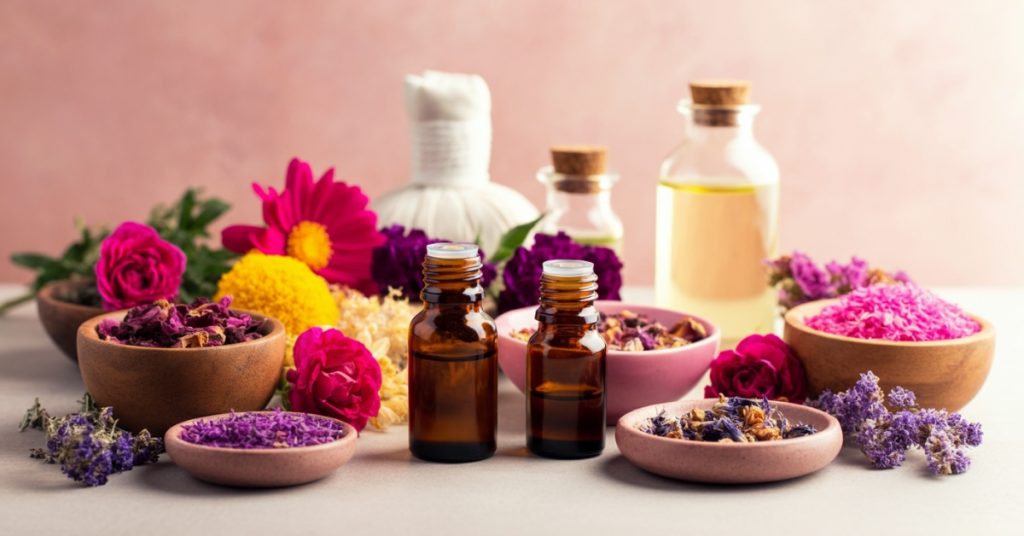
Synthetic air fresheners might provide instant gratification, but they come with hidden costs to your health and the environment. Many commercial air fresheners contain volatile organic compounds (VOCs), phthalates, and other chemicals that can trigger allergies, headaches, and respiratory issues.
Natural alternatives, on the other hand, improve air quality while providing pleasant aromas. They don’t mask odors with overwhelming artificial scents; instead, they neutralize unpleasant smells and replace them with genuine freshness. Additionally, natural methods are significantly more economical since many effective ingredients are common household items.
The environmental benefits are equally compelling. Natural scenting methods don’t contribute to indoor air pollution or require aerosol containers that harm the ozone layer. Moreover, most natural ingredients are biodegradable and sustainable, making them an eco-conscious choice for environmentally aware homeowners.
How to Make Your House Naturally Smell Good (Step-by-Step)
Creating a naturally fragrant home requires a systematic approach that addresses odor sources while introducing pleasant scents. This step-by-step method ensures lasting results rather than temporary fixes.
Start with Deep Cleaning and Decluttering
Before adding any pleasant scents, eliminate existing odor sources. Clutter traps dust and moisture, creating breeding grounds for unpleasant smells. Therefore, decluttering is the foundation of how to make your house naturally smell good.
Begin by removing unnecessary items and organizing spaces properly. Next, thoroughly clean all surfaces, paying special attention to areas where odors typically accumulate. Vacuum carpets, wash curtains, and wipe down walls if necessary. This initial cleaning creates a neutral base for your natural scenting efforts.
Apply Natural Deodorizers to Make House Naturally Smell Good
Once your space is clean, use natural deodorizers to neutralize any remaining odors. Baking soda is particularly effective for absorbing unwanted smells. Sprinkle it on carpets, let it sit for 30 minutes, then vacuum thoroughly. Similarly, white vinegar can eliminate stubborn odors when used in a spray bottle with water.
For fabric items like upholstery or curtains, create a natural deodorizing spray using equal parts water and white vinegar with a few drops of your favorite essential oil. This solution neutralizes odors without leaving chemical residues.
Introduce Pleasant Natural Scents
After deodorizing, it’s time to add welcoming fragrances using natural methods. Fresh herbs like rosemary, mint, or basil can be placed in small bowls around your home. Essential oils provide concentrated natural fragrances that can be diffused or mixed with water for spray applications.
Fresh flowers offer both visual appeal and natural fragrance. Choose blooms like jasmine, gardenia, or roses for stronger scents, or opt for subtle options like freesia or sweet pea for gentler fragrances.
Best Natural Scent Sources: Plants, Oils, DIY Sprays, and More to Make House Naturally Smell Good
Understanding various natural scent sources allows you to create a customized fragrance profile for your home. Each method offers unique benefits and can be combined for enhanced effectiveness.
Air-Purifying Indoor Plants
Certain houseplants naturally freshen the air while adding pleasant fragrances. Lavender plants provide calming scents and beautiful purple blooms. Jasmine offers sweet, romantic fragrances, particularly in the evening. Mint plants contribute fresh, invigorating aromas while being easy to maintain.
Eucalyptus plants provide clean, spa-like scents and have natural antibacterial properties. Additionally, herbs like basil, rosemary, and thyme offer culinary benefits alongside their pleasant fragrances. These plants work continuously to improve air quality while contributing natural scents.
Essential Oil Applications to Make Your House Naturally Smell Good
Essential oils represent concentrated plant essences that can transform your home’s atmosphere. Use diffusers to disperse oils throughout rooms, or add a few drops to cotton balls and place them in strategic locations.
Popular essential oil combinations include lavender and vanilla for relaxation, citrus oils for energy, and eucalyptus with peppermint for freshness. Always dilute essential oils properly and ensure they’re safe for pets if you have animals in your home.
DIY Natural Room Sprays and Potpourri
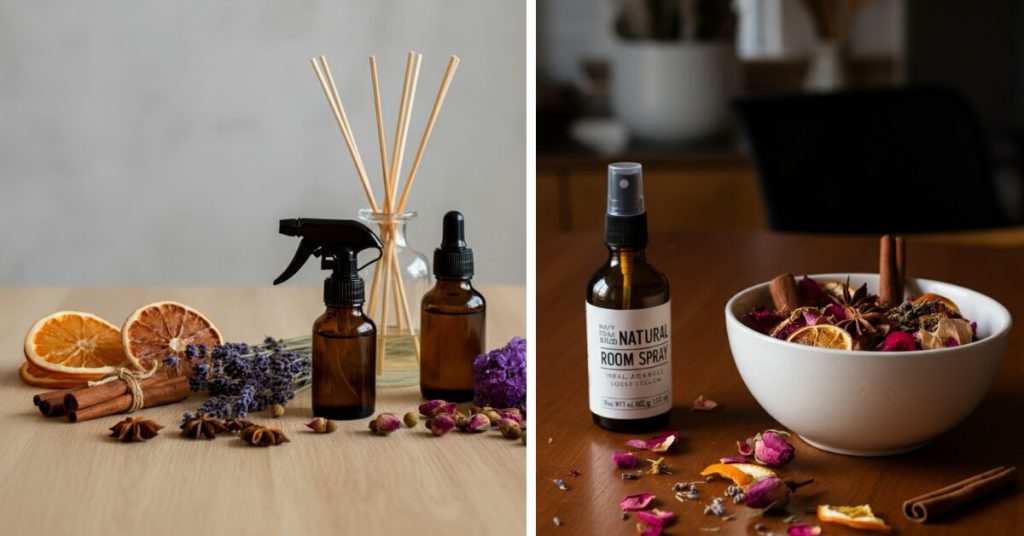
Creating your own natural air fresheners gives you complete control over ingredients and scents. Mix distilled water, witch hazel, and essential oils in spray bottles for instant room refreshers. Add baking soda to the mixture for extra odor-fighting power.
Homemade potpourri combines dried flowers, herbs, and citrus peels for long-lasting natural fragrance. Create seasonal blends using cinnamon and orange peels for winter warmth or rose petals and lavender for spring freshness.
Simmer Pot Recipes
Simmer pots use your stovetop to distribute natural fragrances throughout your home. Combine water with ingredients like cinnamon sticks, orange peels, vanilla extract, and fresh herbs. Let the mixture simmer on low heat, adding water as needed.
Popular simmer pot combinations include apple slices with cinnamon and cloves for fall, lemon and rosemary for freshness, or vanilla and almond extract for cozy comfort. These natural methods fill your home with inviting aromas while adding humidity to dry air.
How to Target Specific Areas (Kitchen, Bathroom, Closet, Living Room)
Different areas of your home require tailored approaches for optimal natural scenting. Each space has unique challenges and opportunities for implementing natural fragrance solutions.
Kitchen Natural Scenting Solutions
Kitchens face constant odor challenges from cooking and food storage. Citrus peels work exceptionally well for neutralizing cooking odors while adding fresh scents. Keep orange or lemon peels in a bowl on your counter, replacing them every few days.
Used coffee grounds absorb strong odors and can be placed in open containers in your refrigerator or pantry. Fresh herbs on windowsills provide cooking ingredients while contributing pleasant aromas. Additionally, simmering vanilla extract or cinnamon in water creates inviting kitchen fragrances.
Bathroom Freshening Strategies
Bathrooms require consistent moisture control and odor management. Eucalyptus bundles hung in your shower release natural fragrances when exposed to steam. These bundles also provide spa-like aromatherapy benefits during your daily routine.
Baking soda placed in decorative containers absorbs moisture and odors effectively. Essential oil reed diffusers work well in bathrooms since they don’t require electricity. Choose fresh scents like peppermint, tea tree, or citrus for bathroom applications.
Closet and Storage Area Solutions
Closets and storage areas benefit from long-lasting natural scent solutions. Lavender sachets repel insects while adding pleasant fragrances to clothing storage. Cedar blocks naturally deter moths while contributing subtle woody scents.
Soap bars placed on closet shelves provide gentle, lasting fragrances for clothing and linens. Choose natural soaps with essential oils for chemical-free scenting. Additionally, dried herb bundles can be hung in closets for natural fragrance and pest deterrence.
Living Room Fragrance Ideas
Living rooms, being central gathering spaces, deserve special attention for natural scenting. Essential oil diffusers work particularly well in these areas since they can be adjusted for different occasions and moods.
Fresh flower arrangements provide visual beauty alongside natural fragrances. Rotate seasonal blooms to keep scents interesting and fresh. Scented candles made from natural soy or beeswax offer pleasant aromas without synthetic additives. However, ensure proper ventilation when burning any candles.
Long-Term Maintenance and Seasonal Variations to Make House Naturally Smell Good
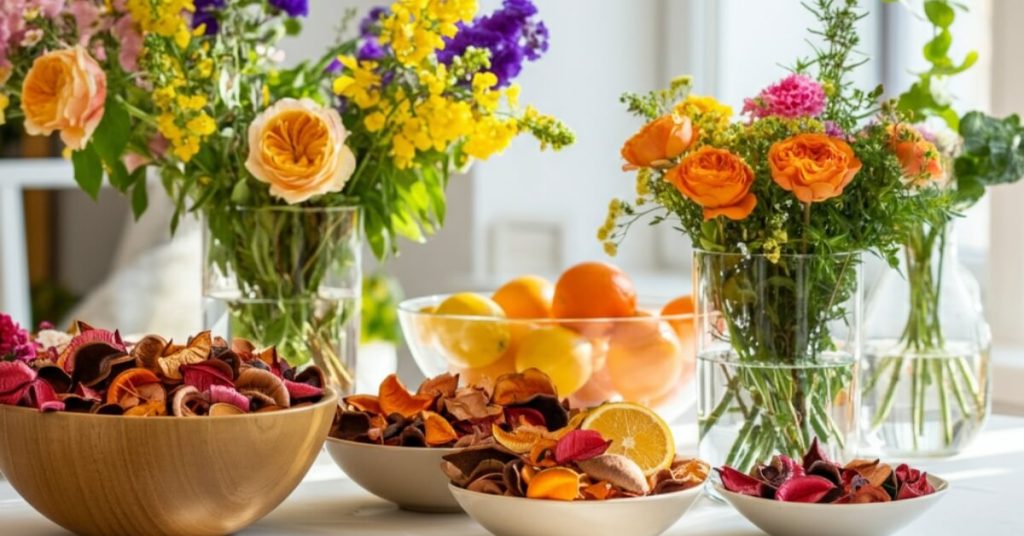
Maintaining naturally good-smelling homes requires consistent attention and seasonal adjustments. Regular maintenance ensures your natural scenting methods remain effective year-round.
Replace natural scent sources regularly to maintain their effectiveness. Potpourri should be refreshed monthly, while essential oil diffusers need refilling based on usage. Fresh flowers require replacement every week or two, depending on the variety and environmental conditions.
Seasonal variations keep your home’s fragrance profile interesting and appropriate. Spring calls for fresh, floral scents like lilac or cherry blossom. Summer benefits from citrus and mint combinations. Fall welcomes warm spices like cinnamon and nutmeg, while winter suits evergreen and vanilla scents.
Final Verdict
Creating a signature natural home fragrance is a simple yet powerful way to make your living space healthier, more welcoming, and uniquely yours. Natural methods not only outshine synthetic scents in freshness and safety but also support your family’s well-being and environmental care.
By experimenting with different combinations, starting with easy techniques like baking soda deodorizing and fresh herbs, then progressing to essential oil blends and seasonal simmer pots, you can craft a scent profile that truly reflects your home’s personality. With consistency and a bit of creativity, you will enjoy a naturally fresh atmosphere that delights guests and offers a comforting sanctuary year-round.
You can read our another blog on How to Remove Musty Odor from Carpet, to keep your house more fresh.
What essential oils are best for freshening up a room naturally?
Lavender, lemon, eucalyptus, and peppermint are excellent choices for natural room freshening. Citrus oils energize spaces, while lavender promotes relaxation. Tea tree oil offers antimicrobial benefits alongside pleasant scents.
How often should I refresh natural scent sources like potpourri or sachets?
Replace potpourri every 4-6 weeks and refresh sachets monthly. Essential oil applications need refreshing every 1-2 weeks, while fresh flowers require replacement every 5-7 days for optimal fragrance.
Can I use natural scents if I have pets?
Yes, but choose pet-safe options carefully. Avoid eucalyptus and tea tree oils around cats, and ensure all essential oils are properly diluted. Fresh herbs like mint and basil are generally safe for pets.
What’s the best way to make a DIY natural air freshener?
Combine 1 cup distilled water, 2 tablespoons witch hazel, and 10-15 drops of essential oils in a spray bottle. Add 1 tablespoon of baking soda for extra odor-fighting power. Shake well before each use.
Do houseplants really help with odor control?
Yes, many houseplants naturally purify air and absorb odors. Snake plants, spider plants, and peace lilies are particularly effective at improving air quality, while some varieties like jasmine and gardenia add pleasant fragrances.
As an Amazon Associate I earn from qualifying purchases.


